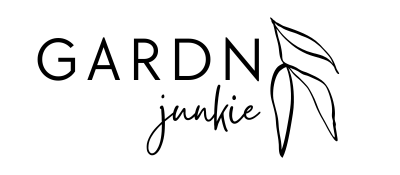Choosing the best flowering plants for sunny areas of your garden is important if you want to make it look as nice as possible. Fortunately, there are a lot of different varieties available that can fit just about any landscape. Here are a few of the most popular.
Lantana
Whether you grow lantanas in containers or as ground covers, the foliage and the flowers add color to sunny areas of your garden. You will find that the lantana is durable and can tolerate dry periods and drought. This makes it a great plant to use in hanging baskets or in a patio container.
Lantana is a tropical plant that is native to Central and South America. It has been used in various medicinal ways. It has been known to ease coughs and respiratory ailments. It has also been used to treat skin rashes. You can also make a tea from lantana. You can put the leaves in a water bath and steep them.
Hibiscus
Whether you are a beginner or a seasoned gardener, a Hibiscus is the best flowering plant for your sunny area. The Hibiscus is a perennial shrub that can live for many years, and its glossy foliage is sure to enhance your landscape. The Hibiscus can be planted from seeds or started from cuttings. In addition, the Hibiscus is easy to propagate.
When you are planting the hibiscus, make sure you have enough space. The plant needs at least 6-8 hours of sunlight each day to produce flowers. You will also need to water the hibiscus regularly. If the hibiscus does not receive enough water, it will eventually rot.
Ixora
ixora is a genus of over 500 species of evergreen shrubs and trees. They are native to the tropical and subtropical regions of the world. The flowers of this plant are often shaped like stars and come in a variety of colors. They also produce berries that are full of seeds.
Ixora is an easy plant to care for. It thrives with bright light and regular watering. There are several ways to propagate it. The easiest is by growing it from stem cuttings.
Daylilies
Whether they’re planted as a border or in an allée, daylilies make excellent flowering plants for sunny areas of the garden. They are tough and resilient, and can thrive in our climate once they’re established. They’re also very easy to grow.
When buying daylilies, look for ones with weather-resistant labels. You’ll also want to purchase a fertilizer that’s labeled for perennial flowers.
You’ll also want to plant them in a spot with at least six hours of sun a day. You’ll need to water them weekly for the first few weeks, and once they’re established, they won’t need much attention.
Coreopsis
Whether you’re looking to add a splash of color to a sunny area of your garden or you’re trying to create a colorful riot in the garden, there are several plants that are ideal for the task. Coreopsis are perennials that have daisy-like flowers and are long-blooming. They are also low-maintenance and drought-tolerant once established.
The Coreopsis species can grow to 2 to 4 feet tall and spread. They produce single or double flowers. Some species bloom from late spring to early summer, while others bloom from midsummer to fall. Depending on the variety, they are suitable for a wide range of climates, from cold to hot. Typically, they are tolerant of dry soils, although they may suffer mildew problems in coastal regions.
Purple coneflower
Known for their attractive color, purple coneflowers are a great addition to your garden. They are native to the United States, but are available in cultivated forms as well. These flowers attract bees, birds and butterflies. They are also a valuable source of food for birds.
The purple coneflower is easy to grow and tolerates a variety of climates. They are ideal for mass planting in perennial beds. They are also drought tolerant.
They grow about two feet tall and two feet wide. They produce a light sweet fragrance. They are best planted in full sun.
Echinacea
Regardless of whether you grow Echinacea in pots, a sunny garden bed, or a wildflower meadow, these clump-forming perennials are a wonderful addition to your yard. They attract pollinators, including butterflies and bees, and are also quite attractive to birds.
They are also drought-tolerant, and are great for adding to the front of a border or mass planting. Their seed heads provide food for wildlife throughout the winter months.
The echinacea plant’s flower heads are a large cone shaped. They come in several colors, such as purple, pink, and white.
Verbena
Often referred to as the “butterfly plant,” Verbena is an excellent choice for any gardener. They are attractive to pollinators and small seed-eating birds. They are also low maintenance and tolerant of heat and poor soil.
There are many varieties of Verbena available, with flowers ranging in color from pink and purple to blue and white. Many are free-flowering, while others are ground cover or trailing types. These versatile plants can be used in the landscape, in hanging baskets, or as container plants.

